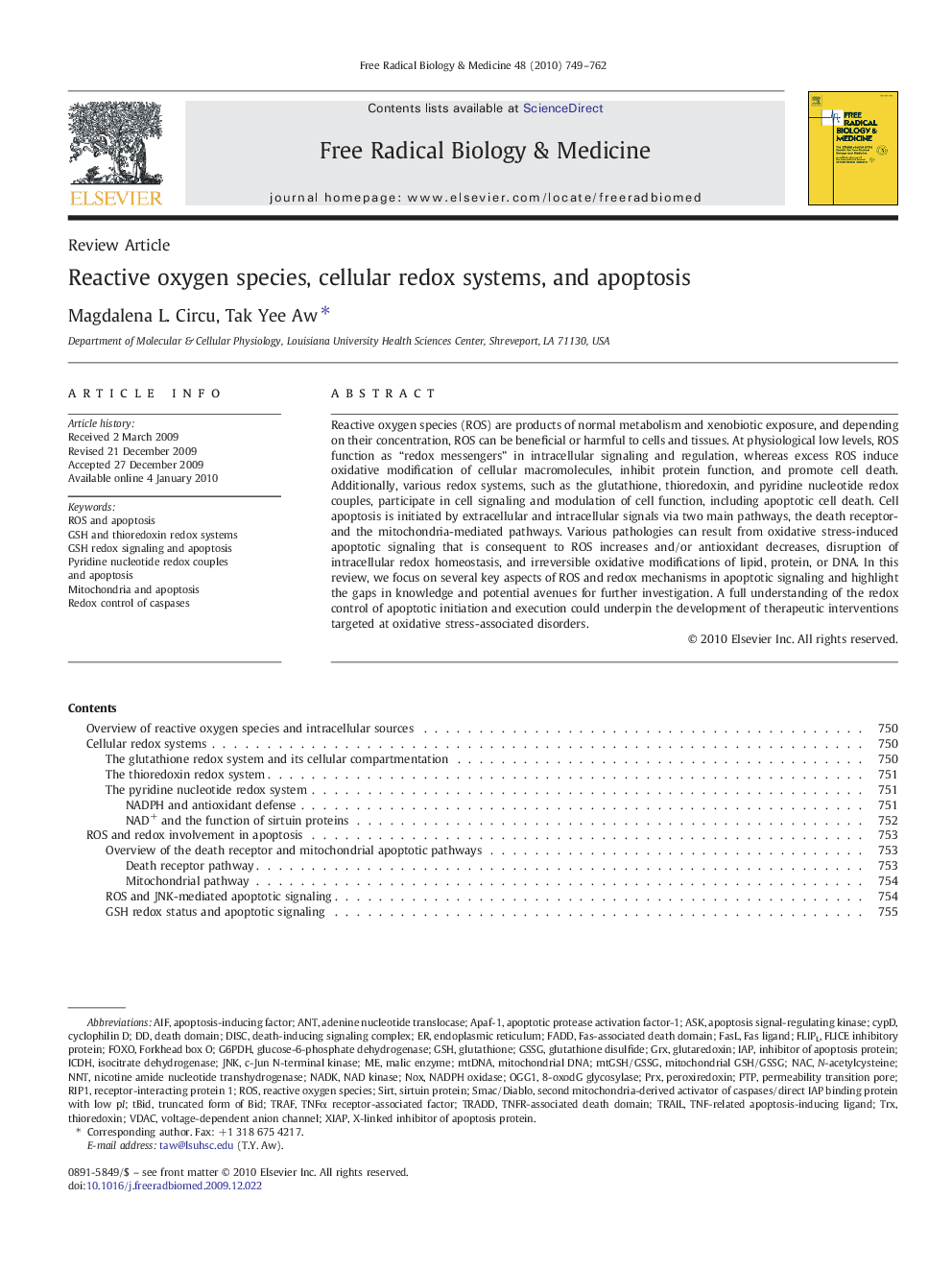| کد مقاله | کد نشریه | سال انتشار | مقاله انگلیسی | نسخه تمام متن |
|---|---|---|---|---|
| 1909834 | 1046742 | 2010 | 14 صفحه PDF | دانلود رایگان |

Reactive oxygen species (ROS) are products of normal metabolism and xenobiotic exposure, and depending on their concentration, ROS can be beneficial or harmful to cells and tissues. At physiological low levels, ROS function as “redox messengers” in intracellular signaling and regulation, whereas excess ROS induce oxidative modification of cellular macromolecules, inhibit protein function, and promote cell death. Additionally, various redox systems, such as the glutathione, thioredoxin, and pyridine nucleotide redox couples, participate in cell signaling and modulation of cell function, including apoptotic cell death. Cell apoptosis is initiated by extracellular and intracellular signals via two main pathways, the death receptor- and the mitochondria-mediated pathways. Various pathologies can result from oxidative stress-induced apoptotic signaling that is consequent to ROS increases and/or antioxidant decreases, disruption of intracellular redox homeostasis, and irreversible oxidative modifications of lipid, protein, or DNA. In this review, we focus on several key aspects of ROS and redox mechanisms in apoptotic signaling and highlight the gaps in knowledge and potential avenues for further investigation. A full understanding of the redox control of apoptotic initiation and execution could underpin the development of therapeutic interventions targeted at oxidative stress-associated disorders.
Journal: Free Radical Biology and Medicine - Volume 48, Issue 6, 15 March 2010, Pages 749–762